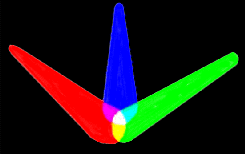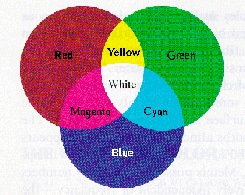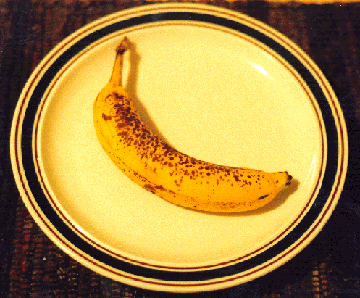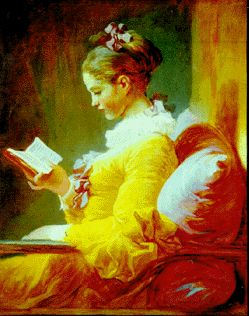Submodule 3: Color and the Spectrum: Objective 2
Steve Beeson, Arizona State University

If we mix all colors of light beams, would we get black like we did when we looked through the color filters? What does the picture above and on the Submodule 3 page tell us?
Based on what we saw earlier on wavelengths, color, and light, what can you conclude about the colors of the spectrum and white light?
The colors in the picture above that mixed to make white light were red, green, and blue. What other three colors might we mix to make white light?
Any three colored light beams that combine to form white light are called primary colors. Red, green, and blue are all primary colors, as are cyan, magenta, and yellow, the three colors in the previous image.
Cyan is a mix of blue and green lights, and magenta is a mix of blue and red lights. What colors would mix to make yellow?
Where do we see a mix of the primary colors in everyday life?
The images on our television sets and computer monitors are composed of tiny beams of red, green, and blue light.
The colors in our clothes are made from dyes whose primary
colors, however, are cyan, magenta, and yellow.

This is a drawing of three overlapping colored light beams and is a handy way of remembering the two sets of primary colors.
In the above picture and the picture at the top of the page, why wasn't the mixed region black like in the picture with the four color filters?
We must remember that we're talking about mixing colored light in this case and not about mixing pigments like we might in art class. You may have noticed that red and green lights mixed make yellow light. However, red and green paints (or pigments) mixed make brown paint.
When we mix light beams (without absorbing) we are performing an additive process. The more we mix the light beams, the "closer" they get to being white light.
When we put light through a color filter, we're performing a "subtractive" process. Some wavelengths of light are being absorbed (subtracted out) and we see only the wavelengths that are selectively re-emitted (the red filter is "red" only because it lets the "red" wavelength through).

The same goes for colored objects: a ripe banana acts as a yellow filter in that the banana only lets the "yellow" wavelength be re-emitted. And green grass only re-emits the "green" wavelength.
So when we mix paints or filters, lots of colors are getting absorbed in the mixture, and the result is that our mixture is darker. We can't mix colors in our palette and make white. We only get black if we keep mixing different colors; the resulting pigment is absorbing all the wavelengths.
Try shining your flashlight through one color filter and then adding another filter. How much light gets through? Add more filters and describe what happens.
See for yourself how paints mix. If you have some pigments at home, mix them on a palette or on a piece of disposable plastic or wood. Or make a painting yourself and see how you can make different colored paints using the "basic" pigments.
How many different pigments do you think Jean-Honor� Fragonard mixed to paint A Young Girl Reading in 1776?

Is there more to "the spectrum" than just colors?
 Top of the Page
Top of the Page
 Submodule 3 Page
Submodule 3 Page
 Modules
Modules
 Light & Optics
Light & Optics
 Submodule 3
Submodule 3
 Readings
Readings
 PiN Homepage
PiN Homepage
 ACEPT
ACEPT
 Glossary
Glossary
 Help
Help